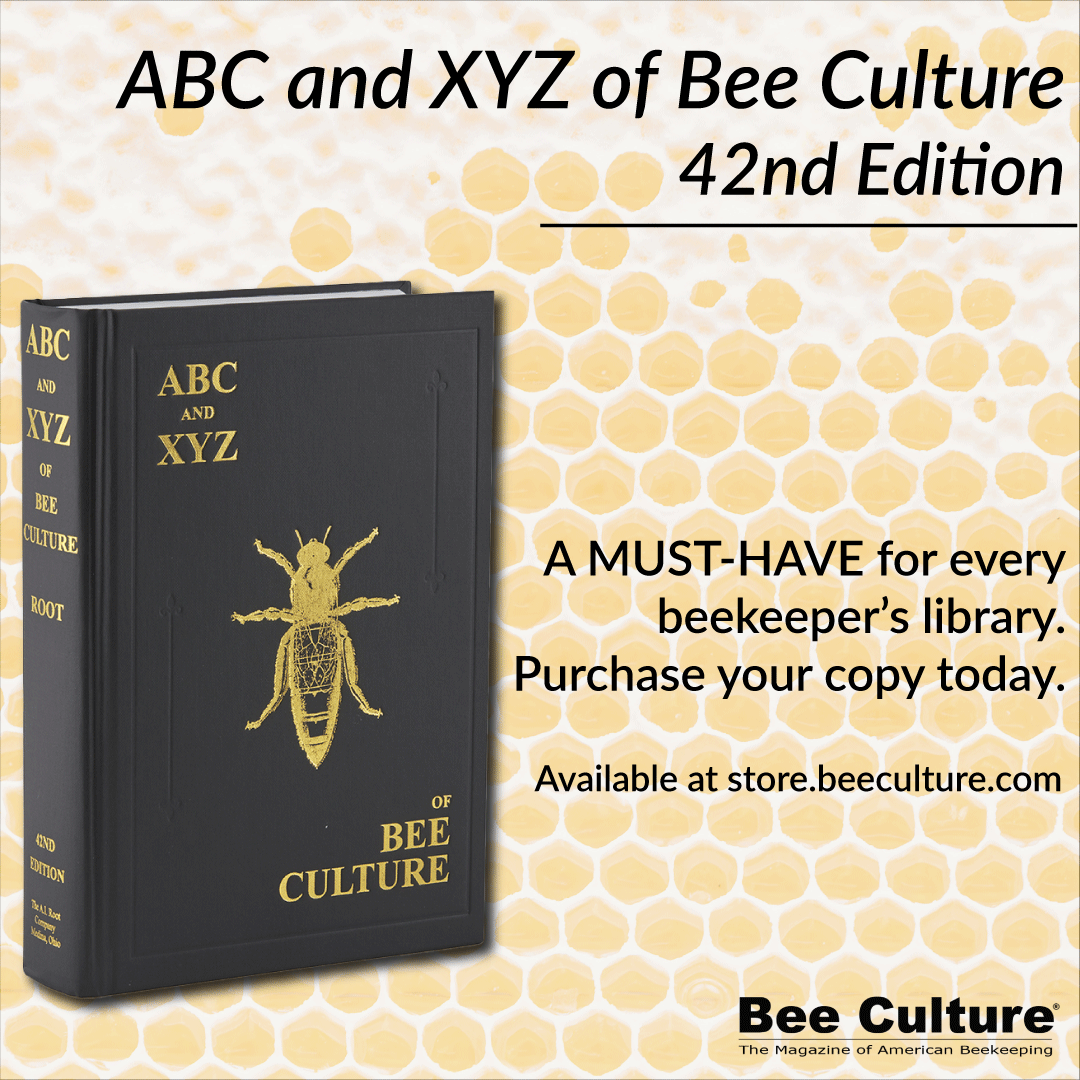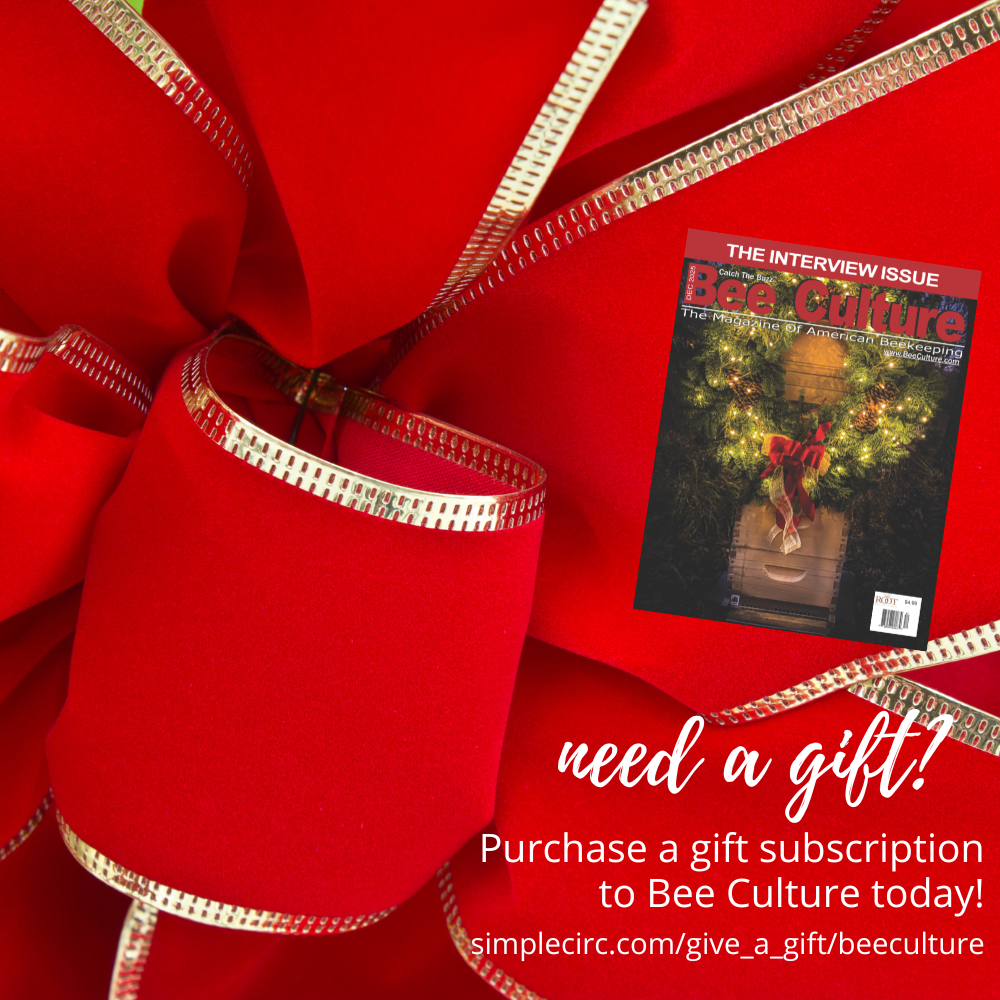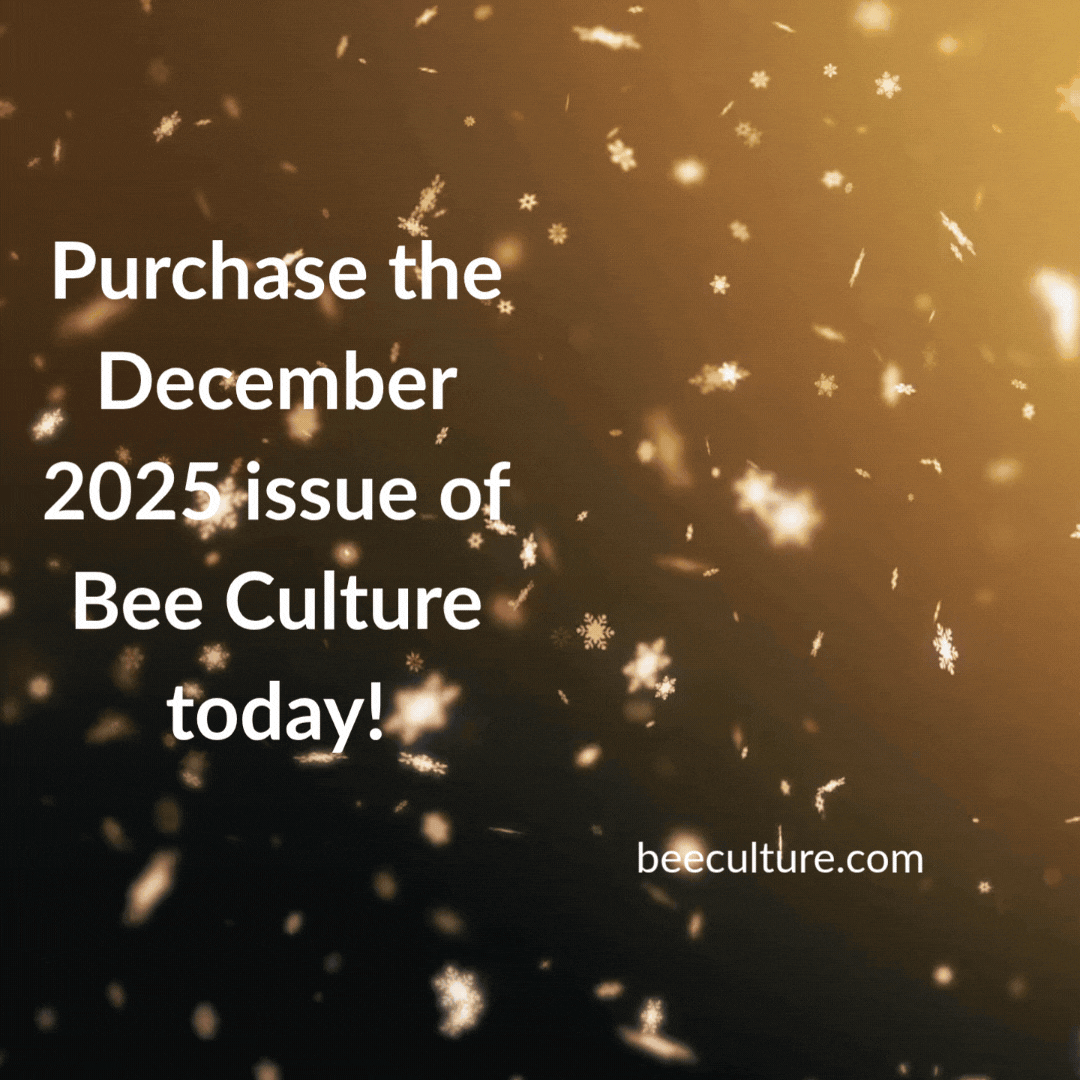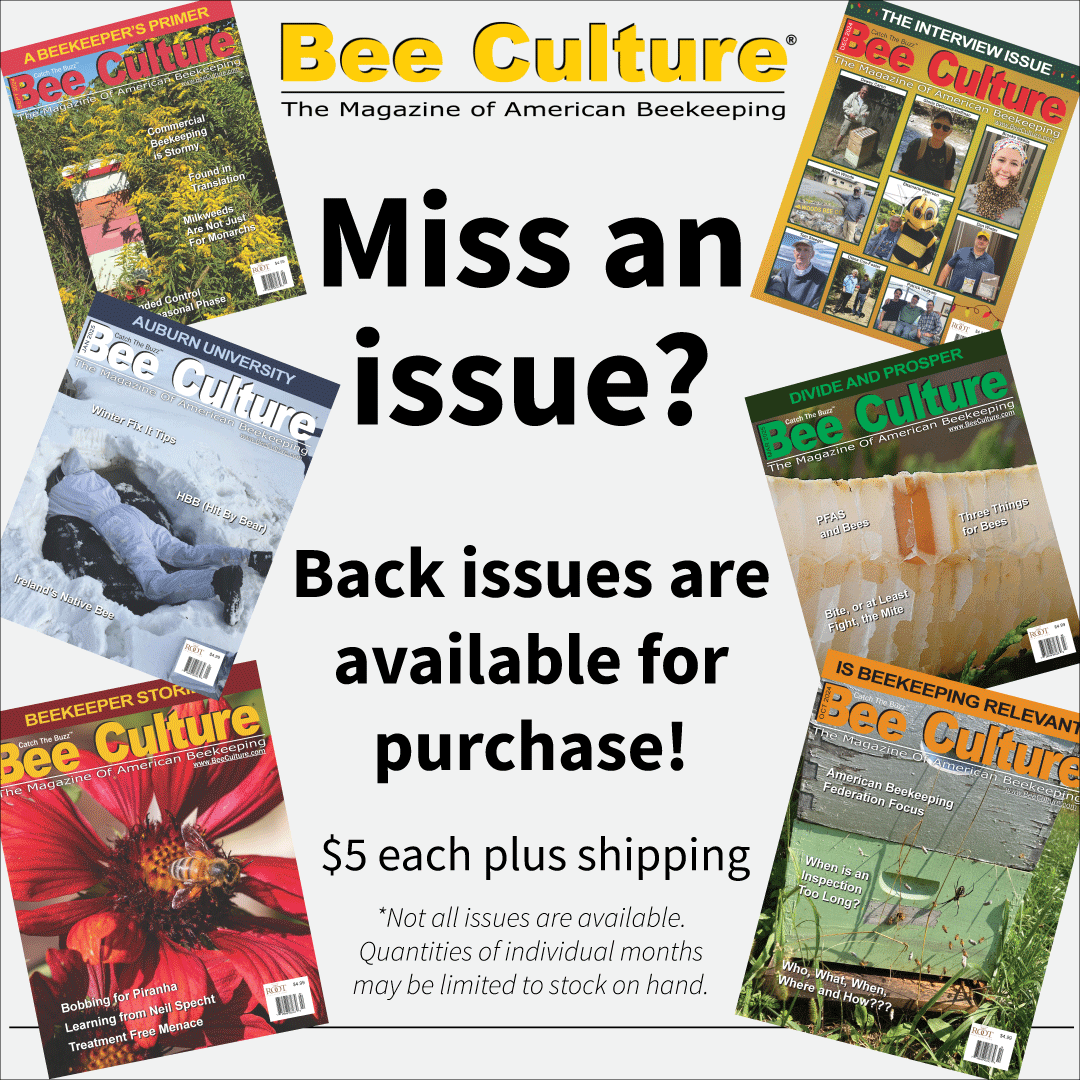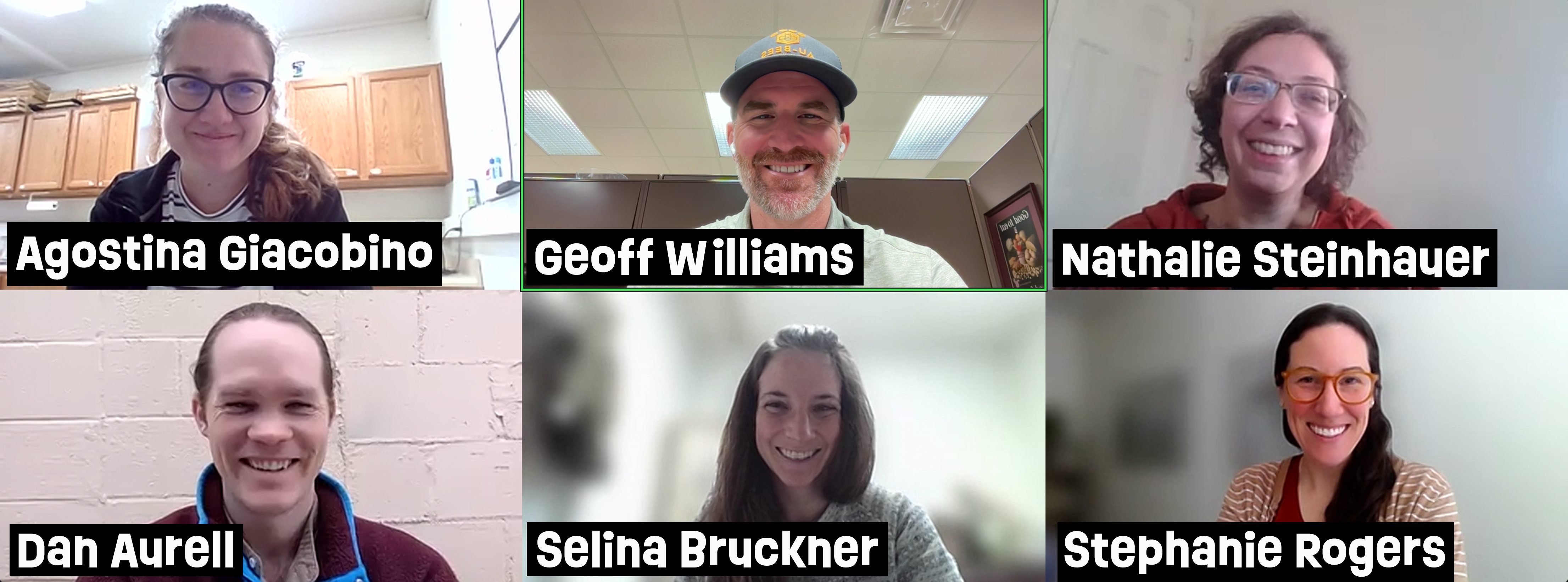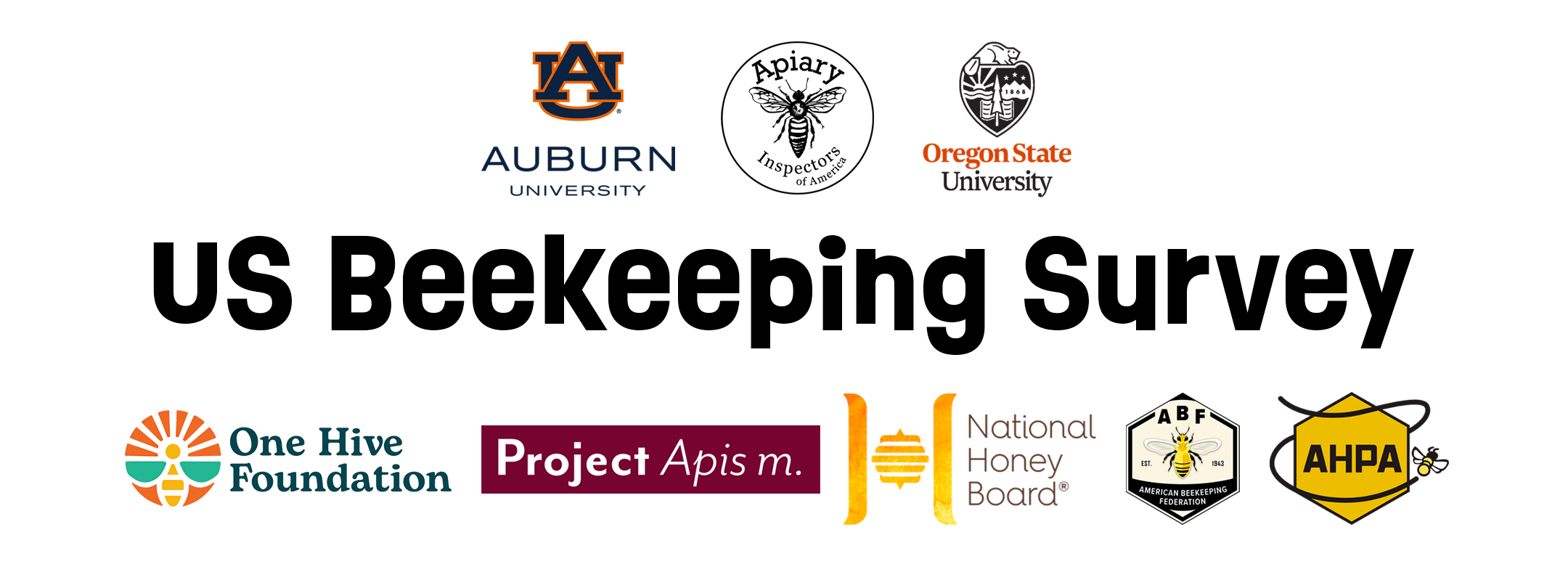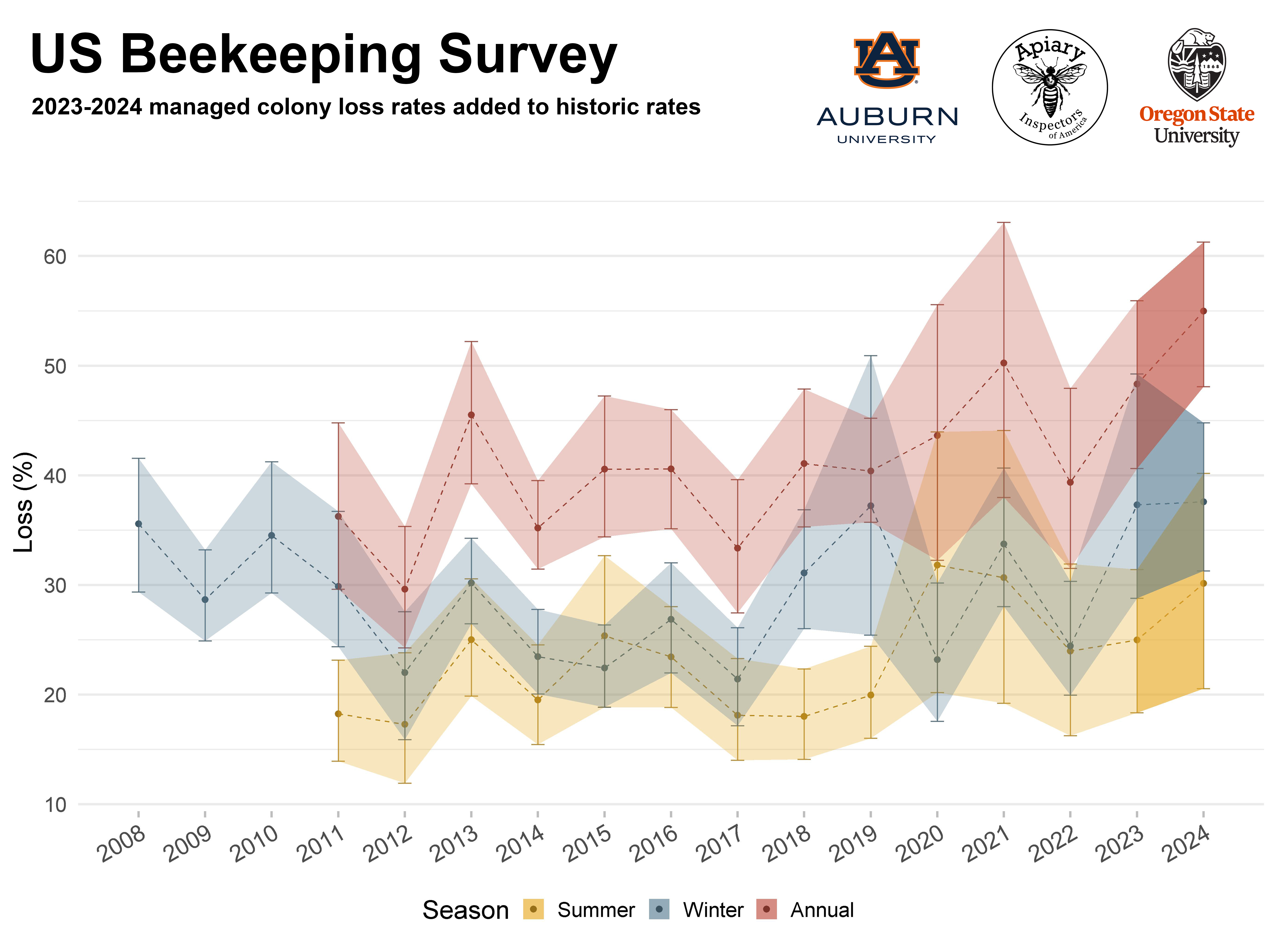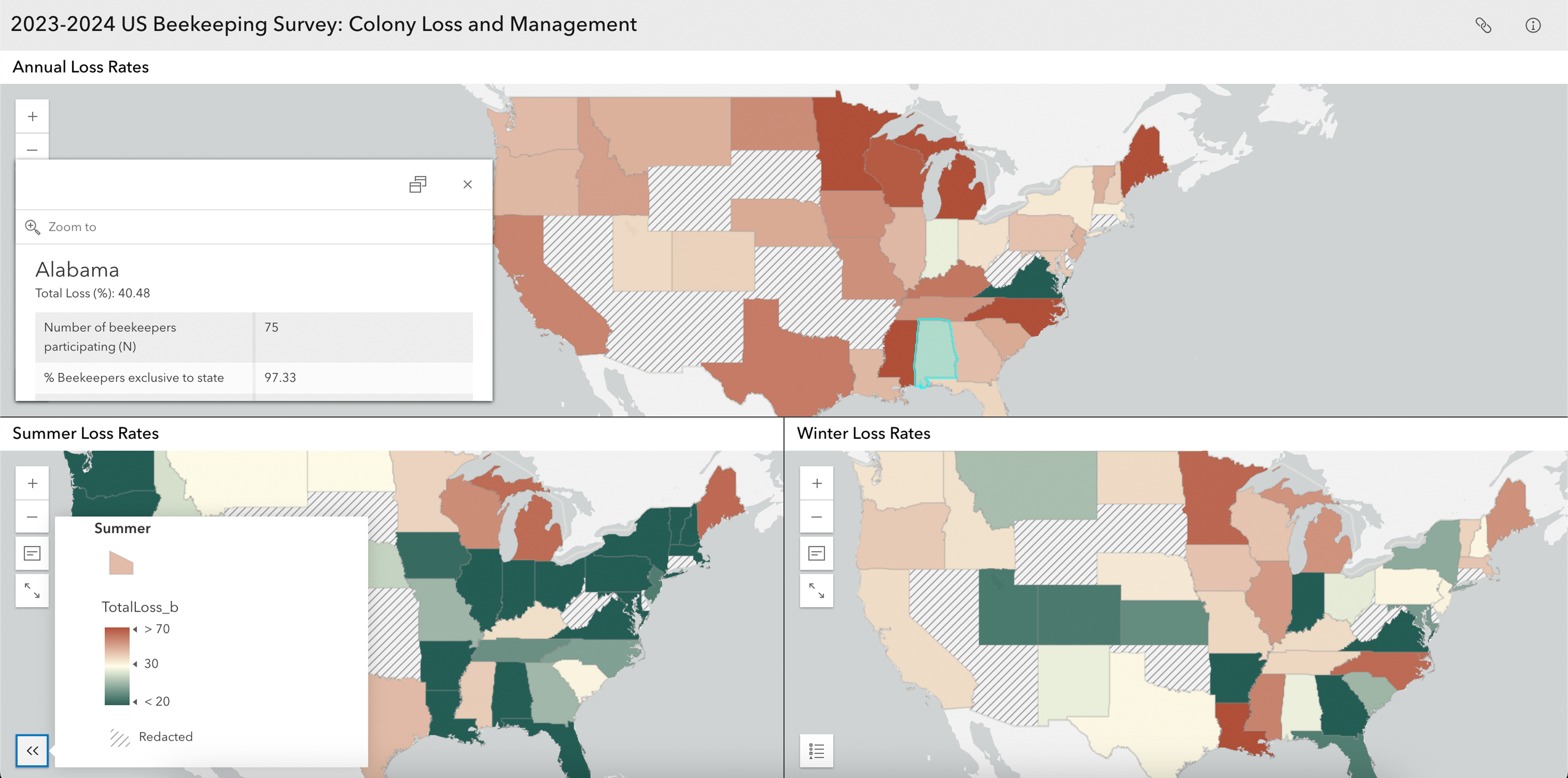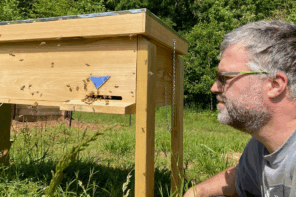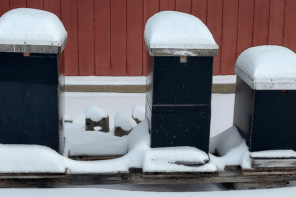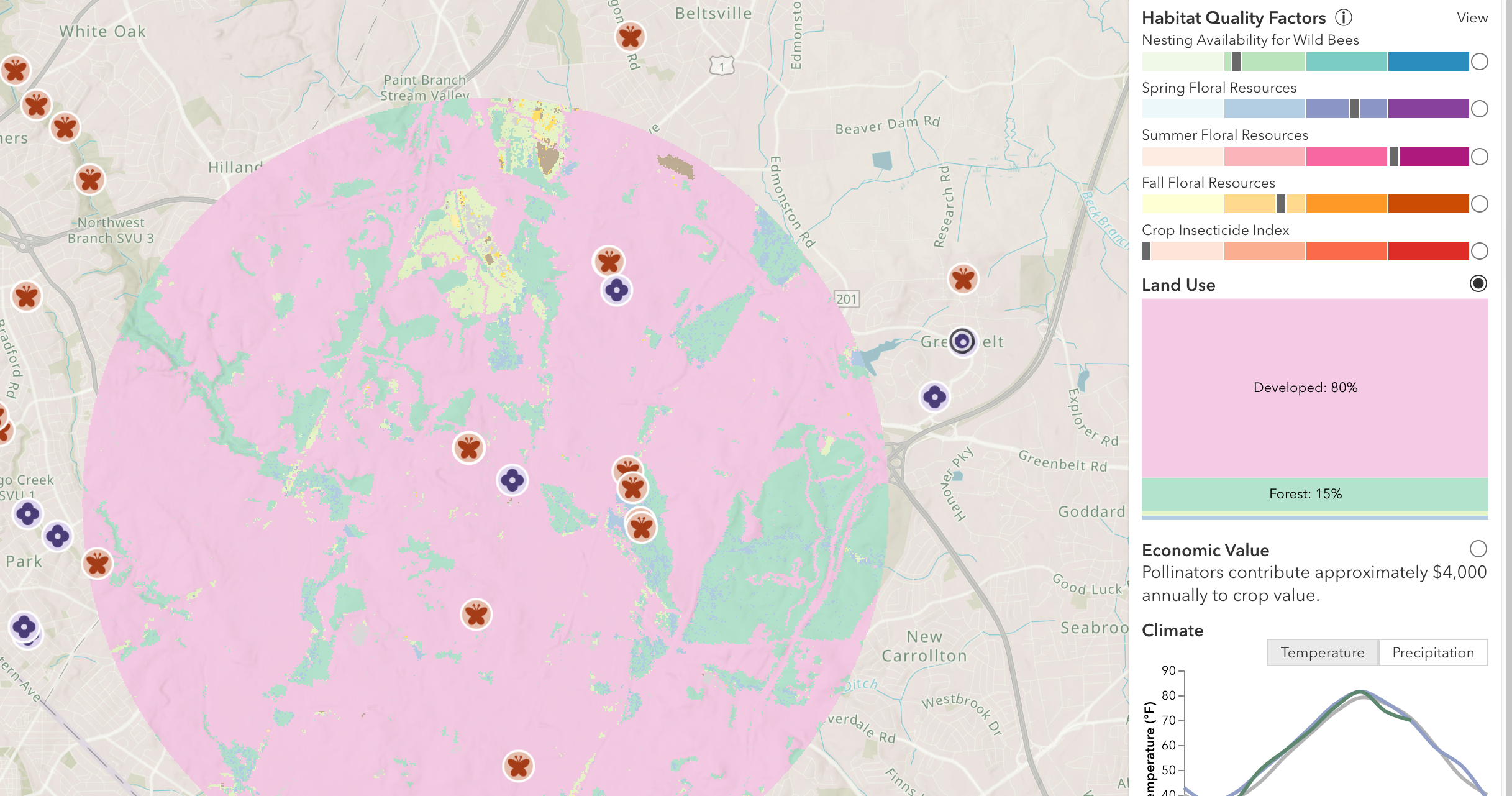Tracking Colony Losses: A Collaborative Effort Through Time
Agostina Giacobino1 & Nathalie Steinhauer2
At the time of writing, the Auburn University Bee Lab, along with the Apiary Inspectors of America, are diligently preparing to launch the 2024-2025 US Beekeeping Survey: Colony Loss and Management by the 1st of April. Why is it important to track colony losses over time, and how can we use this information, you might ask? Well, to start, every year the survey’s results help provide a clear picture of colony loss numbers based on reports from beekeepers, shedding light on the challenges they face. These numbers give the beekeeping industry a stronger voice in the ongoing conversation about the many threats to honey bees, other important pollinators and ultimately food safety. By consistently monitoring colony losses, researchers and beekeepers can identify trends, such as whether certain regions are more frequently affected, or if environmental factors or pest infestations play a significant role in the loss of those colonies. In addition, it is important to monitor shifts in the popularity of management practices, especially considering regional differences and variations in operation size, since beekeeping isn’t uniform and practices can vary widely across the country. This is important, especially in the face of resistance to some treatments that we use.
Last year, more than 1,500 beekeepers from across the United States participated in the survey. We were grateful to everyone that participated, since the success of the survey depends on the active participation of beekeepers from all regions. Accurate data can only be gathered if beekeepers, both large and small-scale, share their experiences. Participation is crucial because it ensures that the survey reflects a complete picture of colony losses, which can vary widely depending on local conditions, management practices, pesticide use and pest outbreaks.
Since you, the beekeepers are the primary and most reliable source of information about the health of your honey bee colonies, we thought it would be valuable to give you a closer look at the behind-the-scenes aspects of this important project.
Taking on the challenge
Taking on the responsibility of managing the colony loss survey to ensure the continued long-term monitoring of honey bee colony losses in the United States was a challenge we embraced wholeheartedly. The original survey was launched in 2010 with the support of the Apiary Inspectors of America (AIA), researchers from various universities, and the leadership of the University of Maryland (UMD). It later became a core program of the Bee Informed Partnership (BIP). When financial challenges forced BIP to shut down in early 2024, a small, dedicated team quickly stepped in to ensure the survey’s survival. Recognizing that achieving success required broad collaboration, we set out to find new partners. AIA once again stepped up, leveraging their nationwide network to distribute the survey across all U.S. states and strengthen connections between academic research institutions and beekeeping organizations. Additionally, the three national beekeeping industry groups – the American Beekeeping Federation, American Honey Producers, and National Honey Board – as well as two non-profits – One Hive Foundation and Project Apis m – stepped up to help to provide financial support. Without this quick coalescing of amazing partners, we would never have been able to continue.
The continuity of the project was essential to ensure comparability and meaningfulness of the long-term dataset that the BIP-organized survey had generated for more than 15 years. While transitions naturally allow room for improvement and change, it was important to us to acknowledge the legacy of the BIP survey, which achieved international recognition. Our hope is that this new effort will continue to fill that vital role in supporting beekeepers and advancing our understanding of colony health.
Meet the research team (Figure 1)
Dr. Geoff Williams, associate professor at Auburn University, has been involved in the BIP survey since 2018, bringing invaluable expertise and continuity to the project. In his new role as team leader, Dr. Williams has taken on the responsibility of providing the survey with a new home and ensuring its long-term sustainability.
Dr. Nathalie Steinhauer has been involved in the BIP survey since her time as a graduate student at the University of Maryland, starting in 2012, and later as she served as the Research Officer for BIP from 2017 to 2024. Her primary responsibilities include data analytics and modeling to ensure the survey generates meaningful insights for beekeepers and researchers alike.
Dr. Agostina Giacobino, a visiting scientist from Argentina, joined the Auburn team in 2024 to spearhead the transition to a new survey platform. She leads the organization and deployment of the survey and oversees the reporting and communication of its results.
Dr. Dan Aurell, a postdoctoral fellow at the Auburn University Bee Lab and former Field Specialist for BIP, collaborated on designing the survey questionnaire. He provided dedicated support to Dr. Williams in grant writing and successfully secured approval for the survey protocol from the Institutional Review Board (IRB) for the Protection of Human Subjects in Research.
Dr. Selina Bruckner, an assistant Extension professor at the Auburn University Bee Lab, is bringing her experience with beekeeping program evaluation to the team, with the intent that the survey can be a useful evaluation tool for other state beekeeping specialists around the country moving forward. Dr. Bruckner also lead reporting of the survey between 2017 – 2020, back when she was a Ph.D. student!
Dr. Stephanie Rogers, assistant professor in geosciences at Auburn University, is a GIS expert leading the spatial and temporal modeling of survey-derived data. Dr. Rogers and her team deployed the interactive maps available for exploring colony losses by state and season for the 2023-2024 period, available at the survey website – https://aub.ie/colonysurvey.
Additionally, we had many conversations with AIA’s leadership to finalize the questions and discuss how best to distribute it to beekeepers.
Ensuring financial security
Securing funding became one of our initial priorities to support this collaborative effort. The 2023-2024 US Beekeeping Survey: Colony Loss and Management was supported by the One Hive Foundation, Project Apis m., AHPA, ABF and the National Honey Board. We also couldn’t have accomplished this work without the support of beekeepers, who took the time to answer the survey and help share it, as well as several beekeeper associations that also actively supported the initiative (Figure 2). This project can be seen as a complex puzzle, where each piece is essential to achieving a larger, more ambitious goal.
How do we decide which questions to include in the survey?
Researchers are always eager to learn from beekeepers’ experiences (as you can tell from the many surveys you receive every year). However, deciding what to ask is no simple task. Several factors are involved in making a survey successful, and having a million questions is certainly not one of them! Striking the right balance between being informative and concise is therefore essential. For the 2023-2024 US Beekeeping Survey, we kept all the key questions from the former BIP survey that allowed us to calculate losses using the established methodology. This approach enables us to cautiously but reliably compare results with previous reports dating back 16 years. We also introduced a new block of questions focused primarily on Varroa management, as beekeepers’ answers and numerous research papers identified it as a major factor associated with colony losses.
What is interesting about Varroa control is that it is a threat beekeepers can actively address. Beekeepers can monitor and treat colonies, incorporate preventive and non-chemical strategies and make decisions based on the observations collected from the colonies. Understanding the most frequently used strategies for managing Varroa populations, and connecting these to colony losses, is a starting point for improving what is within our control. Are there opportunities to make some beekeeping practices more effective? Can we maximize colony visits by combining practices to achieve healthier and therefore more productive colonies? These were the guiding principles we used to choose questions in the 2023-2024 survey. The challenge for the 2024-2025 US Beekeeping Survey will be to review and improve the management block, again based on beekeepers’ responses and comments. We hope everyone finds the 2024-2025 survey user-friendly; at least that was our intention!
How do we distribute it and who helps with that?
The new survey is available throughout the month of April on the AIA website – https://aub.ie/colonysurvey. To reach as many beekeepers as possible, we rely on different communication channels, including Bee Culture Magazine and American Bee Journal. Most importantly, participating beekeepers play a crucial role by sharing the survey and encouraging their peers to take part. Their support is essential to making the survey results meaningful and impactful.
Where can you find the survey results and available resources for researchers, beekeepers and stakeholders?
Resources related to the survey results, including a detailed technical abstract, static and interactive maps by season and state, and other valuable tools, are available on the AIA Website – https://aub.ie/colonysurvey or by scanning the QR code (Figure 3). These resources provide in-depth insights into the data and trends, allowing users to explore the information in a dynamic and accessible way. For example, we estimated annual colony losses in 2023-2024 to be around 55% — the highest rate reported since 2010-2011 (Figure 4). This highlights the ongoing challenges faced by beekeepers and researchers despite their dedicated efforts. Additionally, given the considerable variation in state loss rates across the country, the interactive web map serves as a powerful resource, visualizing colony losses by state for Annual, Summer and Winter periods (Figure 5).
Colony losses in the U.S. are a multifactorial issue that requires a collective effort from the entire beekeeping community. By sharing their insights, beekeepers not only help document colony losses but also contribute to shaping potential policies and practices based on accurate and comprehensive data. The number of participants and institutions involved in this, and similar projects reflects both the magnitude of the problem and the critical importance of understanding and addressing its causes. Given the massive losses being reported at the time of writing, completing this survey seems more prudent than ever.
For more information about the survey, including access to downloadable figures and interactive maps and to participate in this year’s US Beekeeping Survey during the month of April, go to: https://aub.ie/colonysurvey or scan the QR code (Figure 3).
1 Department of Entomology and Plant Pathology, Auburn University, Auburn, AL.
2 Departmnt of Horticulture, Oregon State University, Corvallis, OR.


